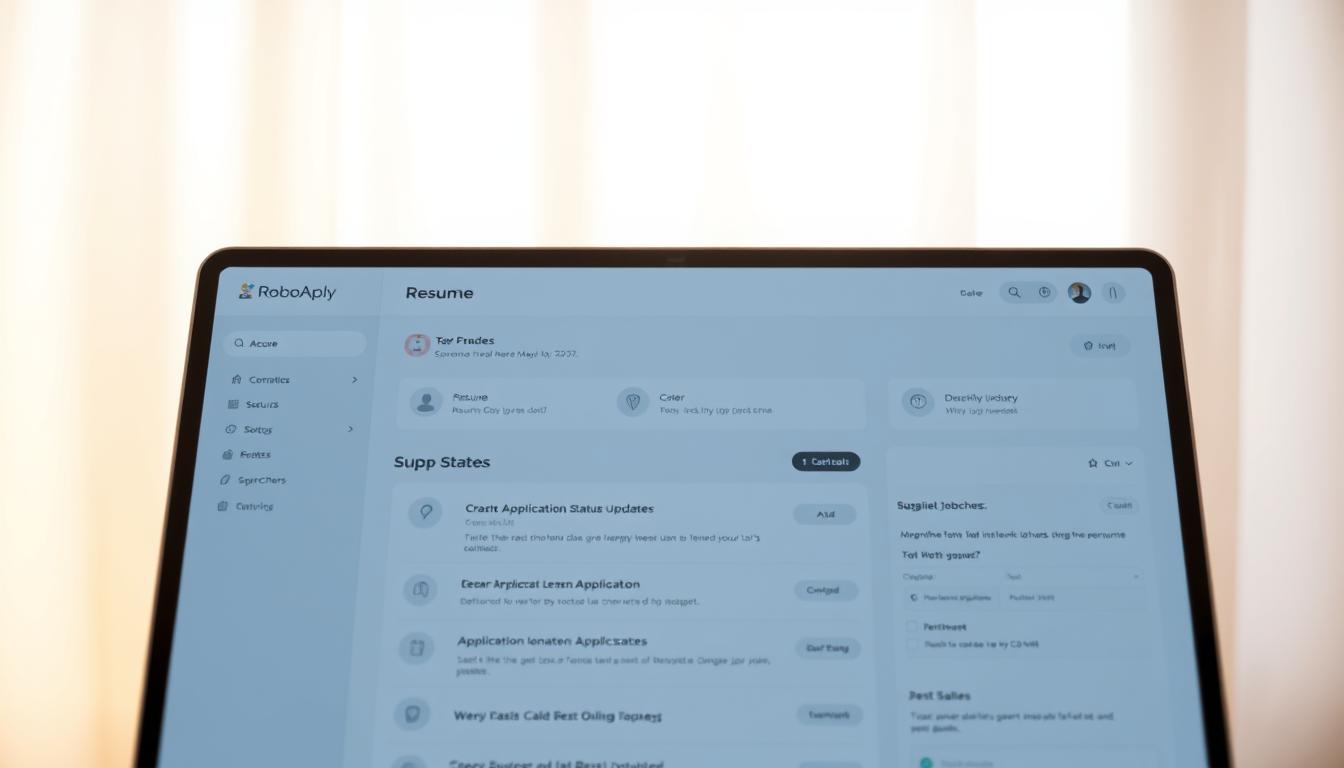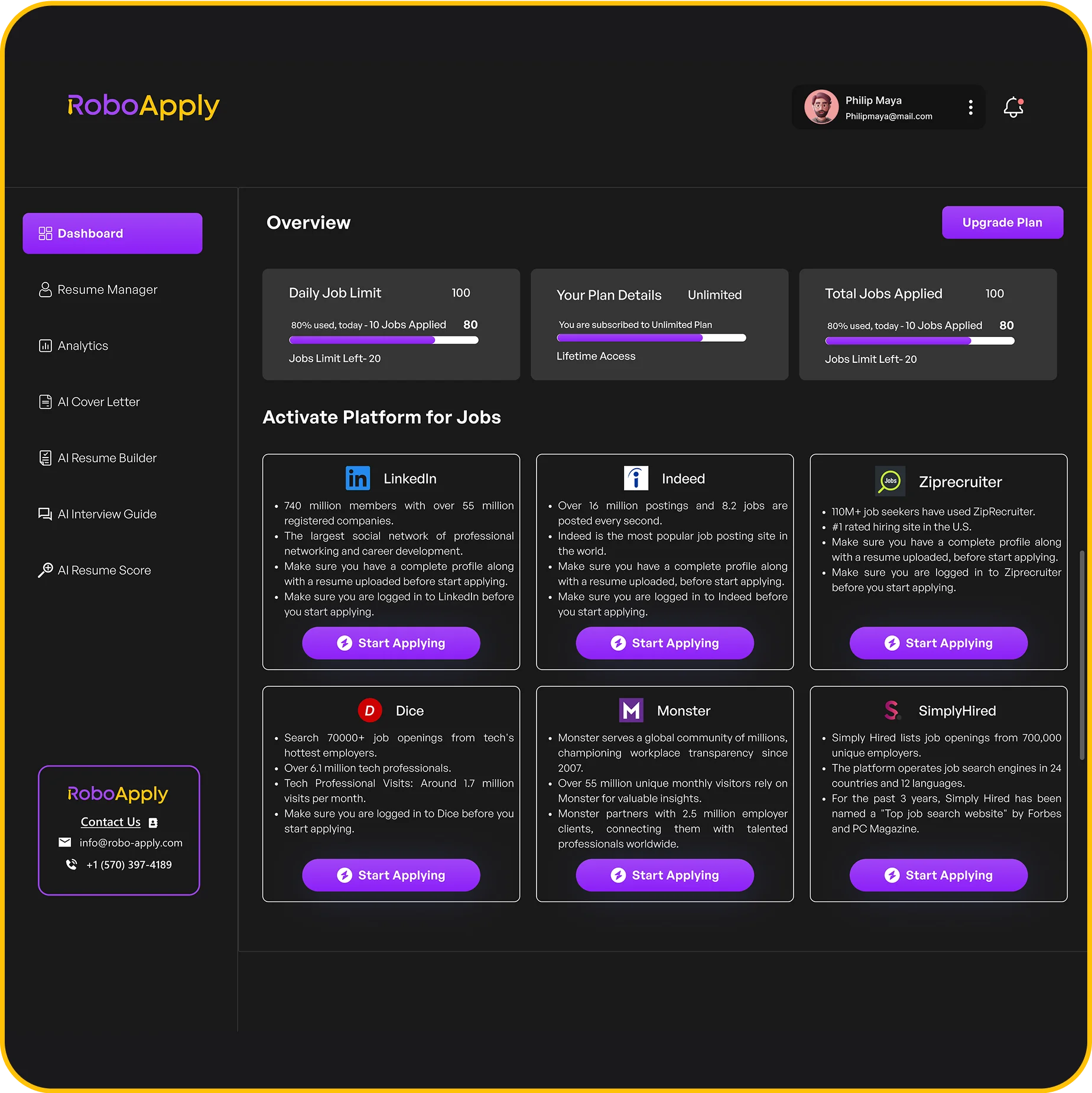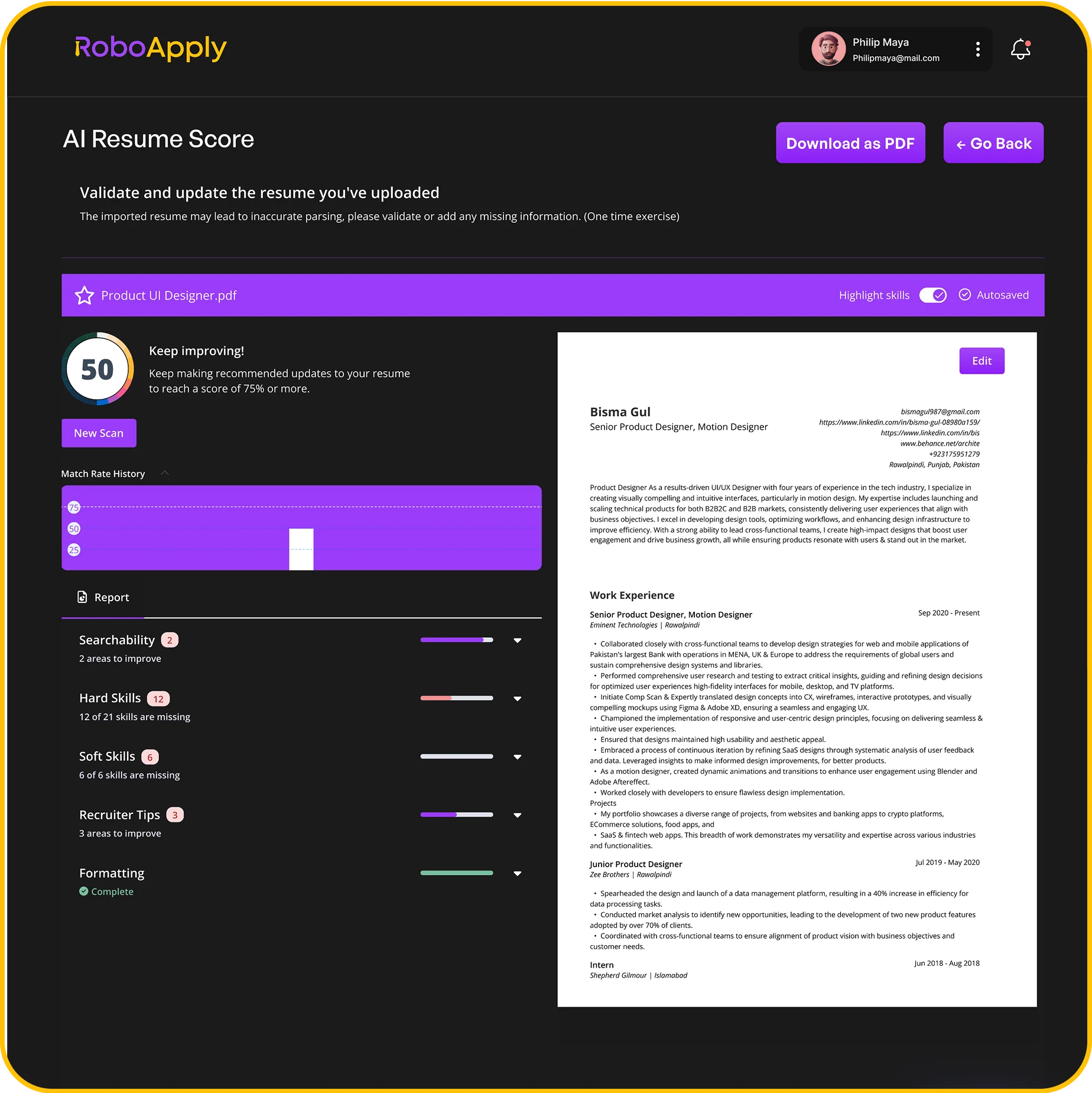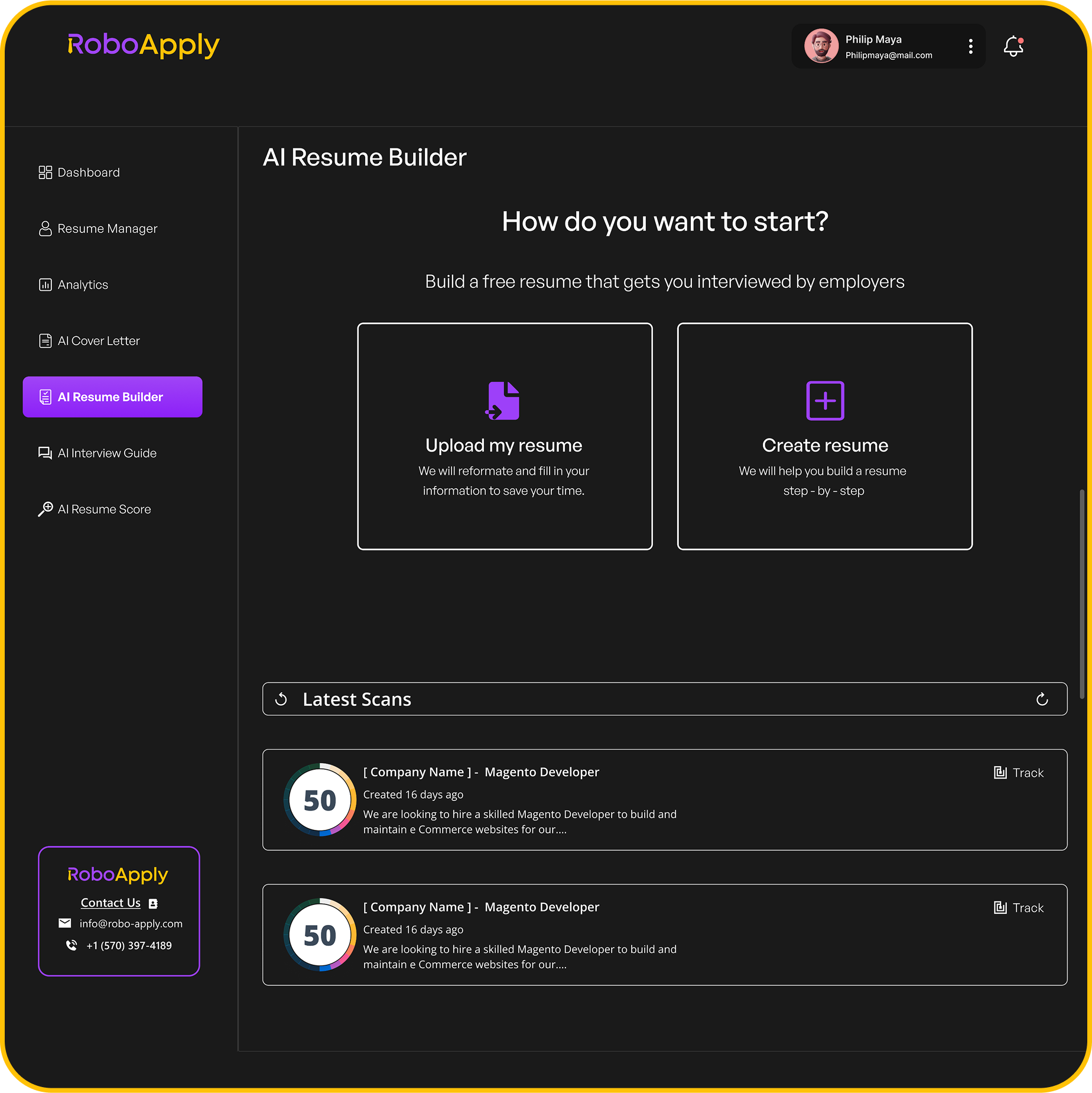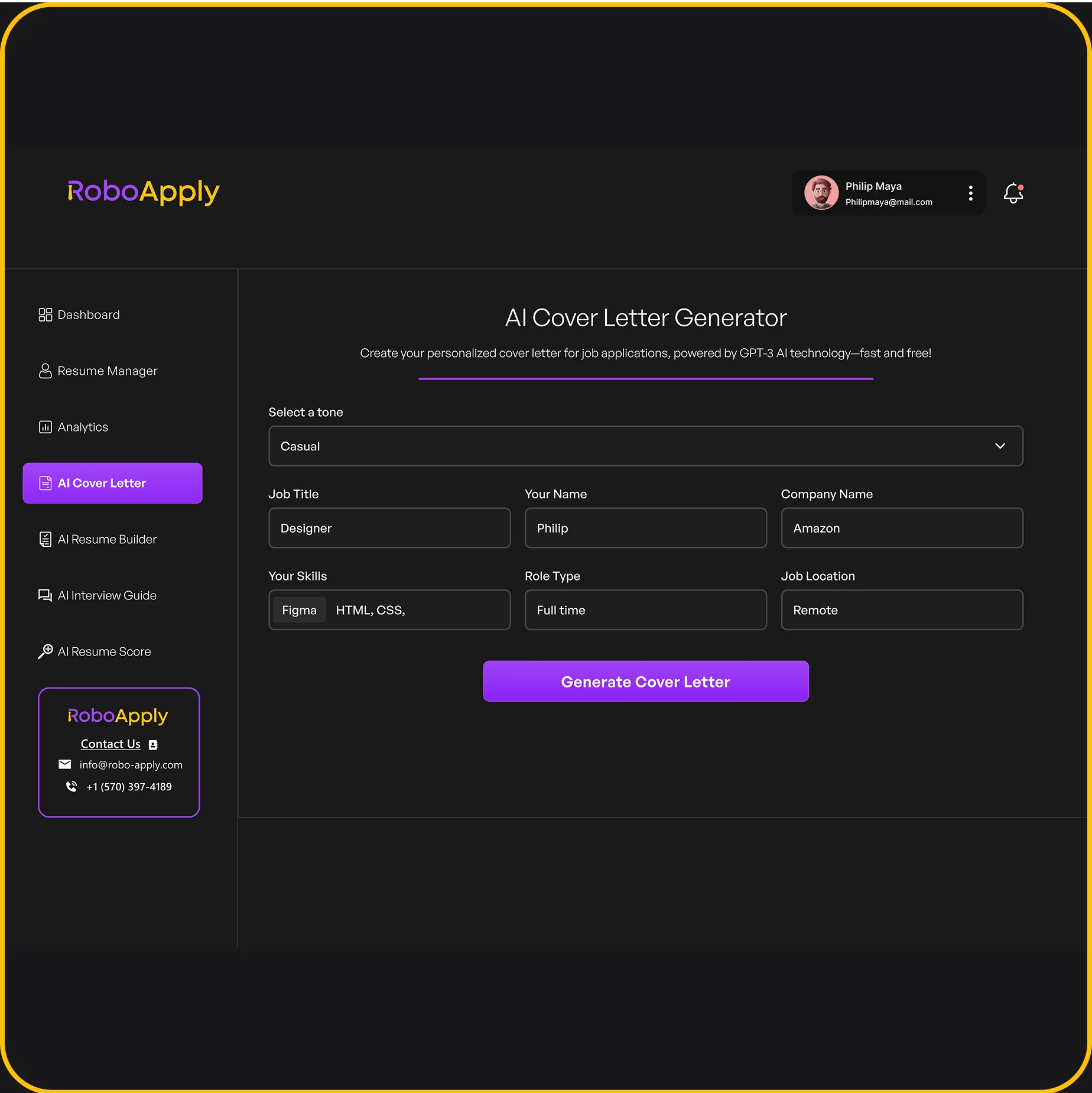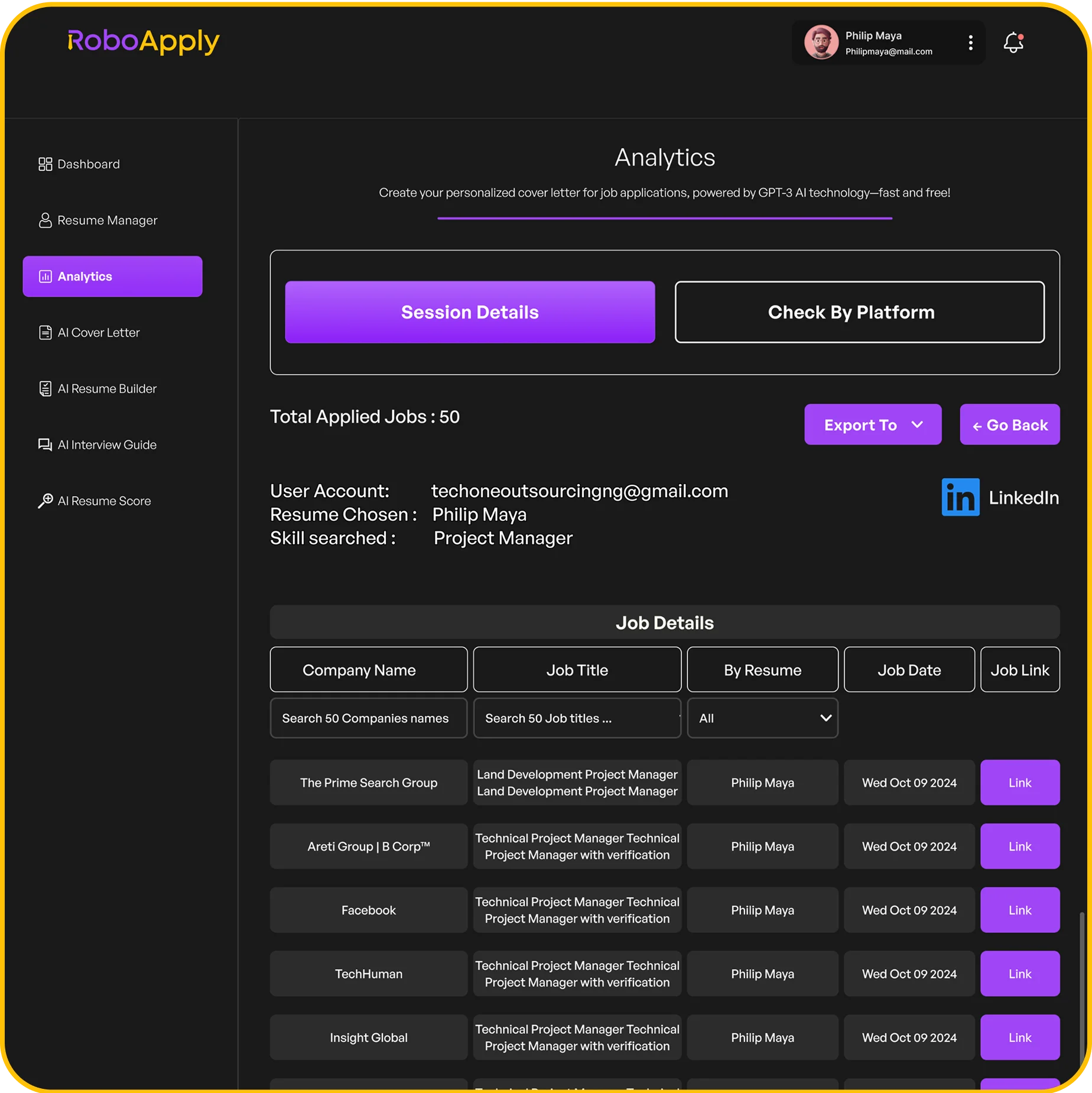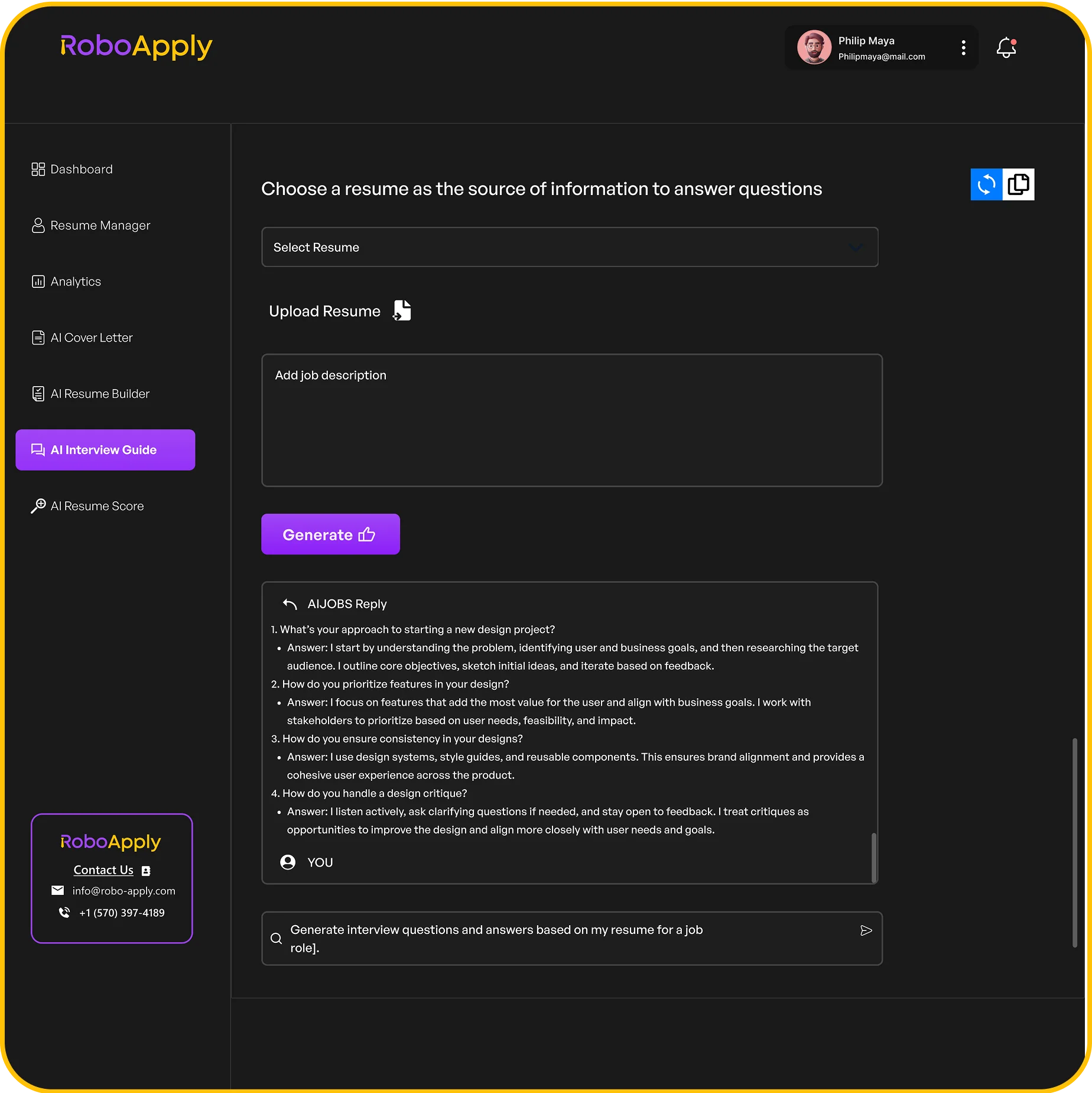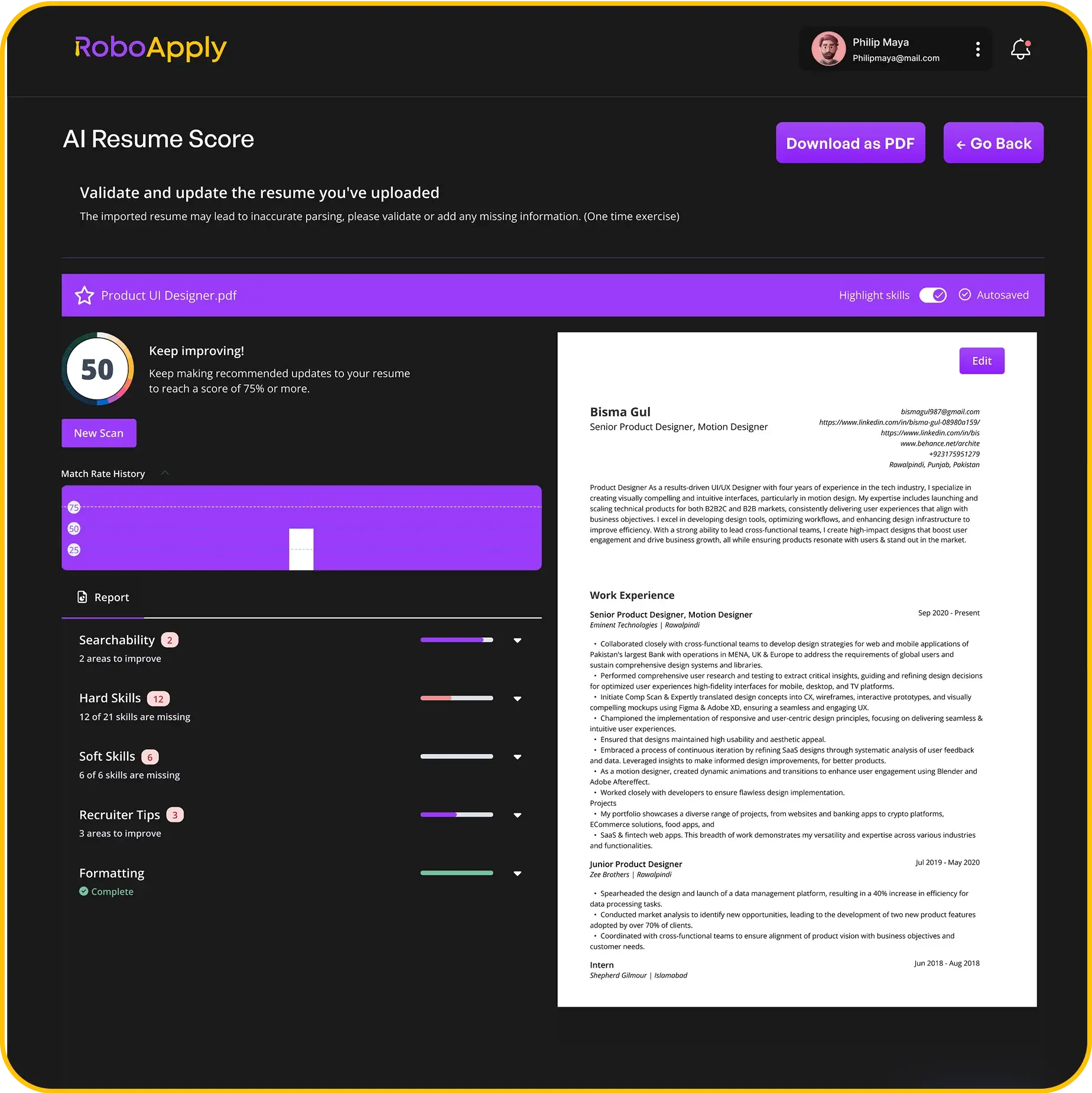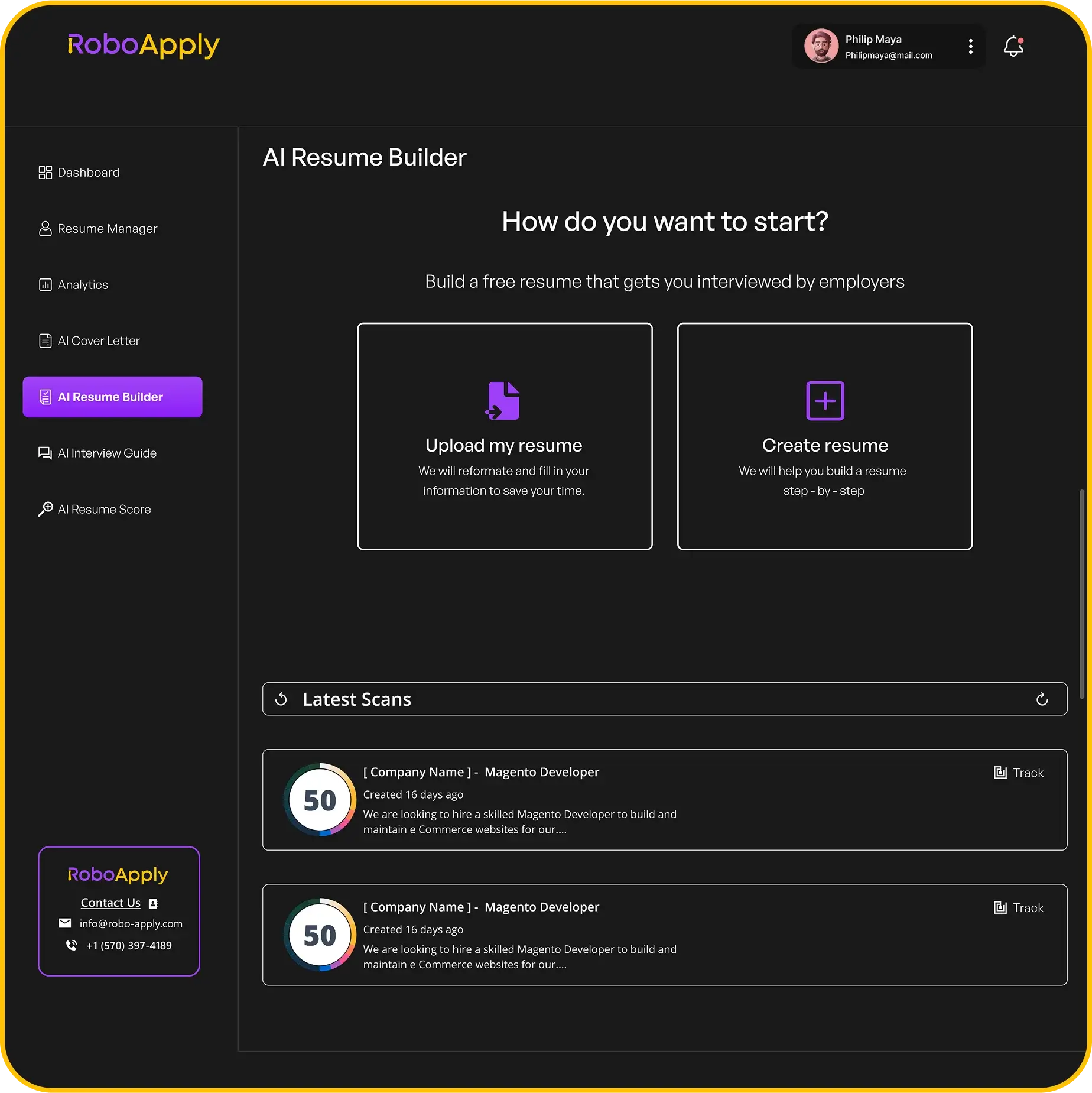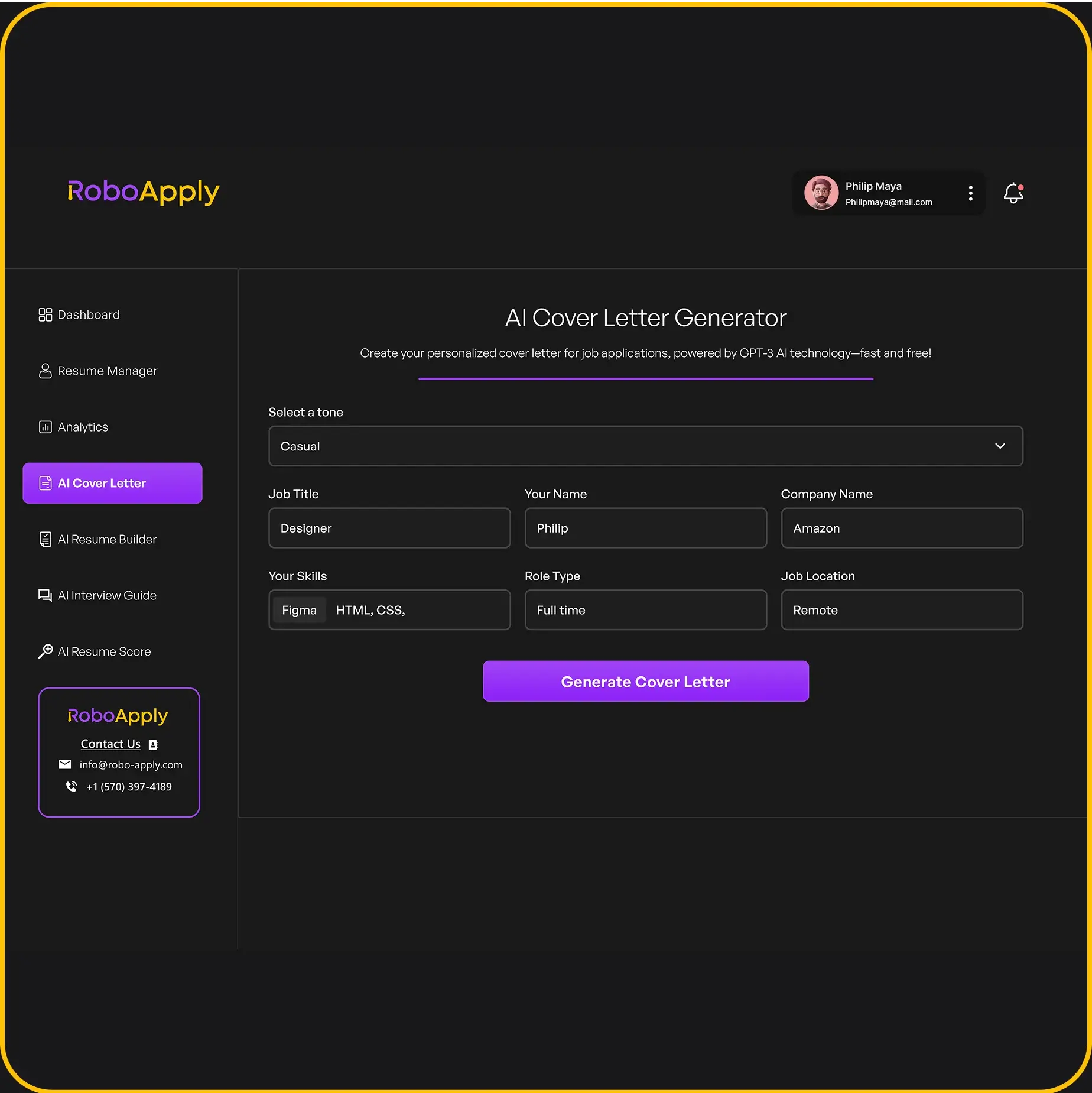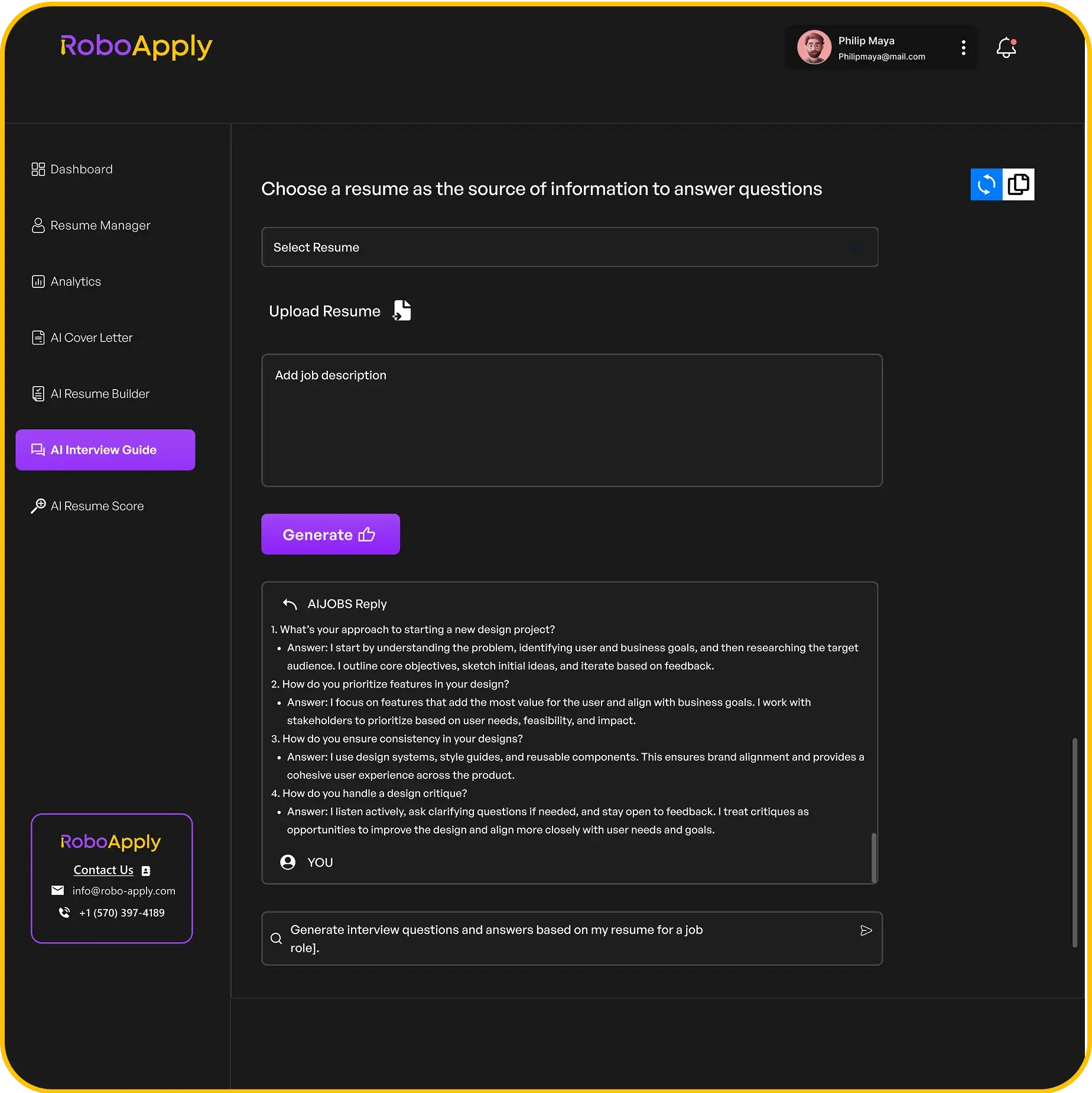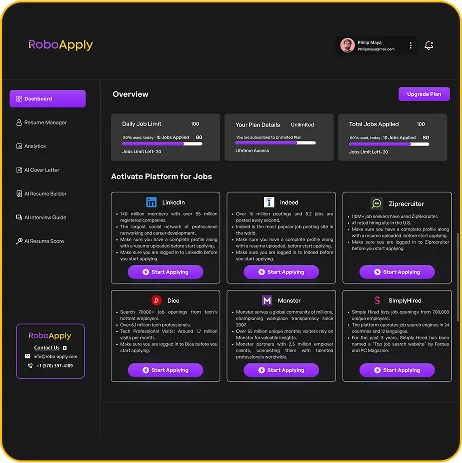Looking to land a great help desk job? Your resume is super important. It’s the first thing hiring managers see, and it needs to show them you’re the right person for the job. This article will walk you through 13 different help desk resume examples and give you tips to make your own stand out. We’ll cover everything from showing off your technical skills to highlighting your customer service abilities. Get ready to make a resume that gets noticed!
Key Takeaways
- A strong Help Desk Resume should clearly show your problem-solving and customer service skills.
- Include specific examples of how you’ve helped users and fixed technical issues.
- Use keywords from job descriptions to make sure your resume gets picked up by applicant tracking systems, like those used by RoboApply.
1. Help Desk Manager

Help Desk Managers are super important for keeping customers happy. What they do really affects how satisfied customers are and how loyal they are to a brand. You really need to show you’ve got the skills to handle both the tech side and the people side of things.
To land a Help Desk Manager role, you’ve got to show you’re good with people and tech. Think about it – you’re the go-to person for solving problems and keeping everyone happy.
- Showcase your customer service skills.
- Highlight your ability to manage teams.
- Demonstrate how you’ve made support better.
It’s all about showing how you’ve made things better, whether it’s cutting down on how long it takes to fix problems or making customers happier overall. Use RoboApply to tailor your resume to highlight these achievements.
Experience with software like ticket tracking systems is a must. You should also be able to use database software. If you want to find service desk manager resume samples, there are many resources available to help you get started.
2. IT Troubleshooting
IT troubleshooting is a core skill for any help desk professional. It’s not just about fixing things when they break; it’s about understanding why they break and preventing future issues. A good troubleshooter is part detective, part engineer, and part communicator.
Think of it this way: when a user reports a problem, you’re not just fixing their immediate issue. You’re digging deeper to find the root cause, which might involve anything from software glitches to network problems or even user error. It’s a process of elimination, critical thinking, and a bit of technical know-how. RoboApply can help you highlight these skills on your resume by identifying keywords from job descriptions related to troubleshooting and suggesting ways to showcase your experience.
Here’s what effective IT troubleshooting looks like in action:
- Problem Identification: Accurately identifying the issue is the first step. This involves asking the right questions and gathering as much information as possible from the user.
- Root Cause Analysis: Digging deeper to understand the underlying cause of the problem, not just the symptoms.
- Solution Implementation: Applying the appropriate fix, whether it’s a software update, hardware replacement, or configuration change.
- Documentation: Recording the problem, the solution, and any steps taken to resolve it. This helps build a knowledge base for future issues.
Troubleshooting isn’t just about technical skills; it’s also about communication and empathy. You need to be able to explain complex technical issues in a way that users can understand, and you need to be patient and understanding when they’re frustrated.
Effective troubleshooting also means staying up-to-date with the latest technologies and trends. The IT landscape is constantly evolving, so you need to be a lifelong learner. This might involve taking online courses, attending conferences, or simply reading industry blogs and articles. By showcasing your ability to provide IT support and resolve technical issues, you’ll demonstrate your value to potential employers. Highlighting your experience with remote troubleshooting can also set you apart.
3. Leadership And Teamwork
Okay, so you’re not just fixing computers; you’re also working with people. Showing you can lead and play well with others is super important. It’s not enough to just say you’re a team player; you need to prove it with examples. RoboApply can help you tailor your resume to highlight these skills based on the job description.
Think about times you stepped up, helped others, or worked together to solve a problem. These are the stories that will make your resume stand out.
Highlighting leadership and teamwork skills demonstrates your ability to contribute positively to a collaborative work environment.
Here’s the thing: companies want to know you can handle the tech stuff, but they also want to know you won’t be a pain to work with. So, let’s get into how to show off those skills.
Teamwork and leadership aren’t just buzzwords; they’re essential for a smooth-running help desk. Showcasing these skills demonstrates your ability to not only solve technical issues but also to contribute to a positive and productive team environment.
Here are some ways to showcase your leadership and teamwork skills:
- Project Leadership: Describe a project where you took the lead, even if it wasn’t a formal leadership role. What was the goal? What were the challenges? What was the outcome? Quantify the results if possible.
- Mentoring/Training: Did you train new team members? Explain how you helped them get up to speed and become productive. This shows you can teach and guide others.
- Conflict Resolution: Describe a time when you helped resolve a conflict within the team. How did you approach the situation? What was the resolution? This demonstrates your ability to mediate and find common ground.
For example, instead of saying "Good at teamwork," try something like:
- "Led a team of 5 in resolving a critical system outage, reducing downtime by 30% and improving user satisfaction."
- "Mentored 3 new help desk technicians, resulting in a 20% increase in their first-month ticket resolution rate."
Remember, it’s all about showing, not just telling. Use action verbs and specific examples to make your leadership and teamwork skills shine. Think about how you’ve contributed to a team’s success and make sure that comes across in your resume. You can also mention your ability to highlight being a good team player on your resume. This will help you stand out from the competition and land that interview. Don’t forget to tailor your resume to each specific job description, highlighting the skills and experiences that are most relevant to the position. Good luck!
4. Technical Help Desk Procedures

Understanding and following established procedures is super important in a help desk role. It’s not just about knowing the tech; it’s about knowing how to use that knowledge within the company’s framework. Think of it as the instruction manual for keeping things running smoothly. RoboApply can help you highlight these skills by identifying keywords in job descriptions related to specific procedures and suggesting ways to incorporate them into your resume.
Here’s a breakdown of why this is important:
- Consistency: Following procedures ensures everyone gets the same level of service.
- Efficiency: Knowing the steps saves time and reduces errors.
- Compliance: Many procedures are in place to meet legal or regulatory requirements.
Technical help desk procedures are the backbone of efficient IT support. They provide a structured approach to problem-solving, ensuring consistency and compliance across all interactions.
Here’s an example of how you might describe your experience with technical procedures:
- Developed and maintained a knowledge base of troubleshooting steps for common issues, reducing resolution time by 15%.
- Trained new help desk staff on standard operating procedures (SOPs) for incident management and escalation.
- Implemented a new ticketing system that improved tracking and reporting of support requests. This helped with help desk best practices.
It’s also good to show you understand the importance of documentation. Can you create clear, concise instructions? Can you follow existing documentation accurately? These are skills that employers really value. Being able to document procedures is a huge plus.
Think about the specific procedures you’ve used in past roles. Did you follow a specific process for password resets? What about for setting up new user accounts? The more specific you can be, the better. This shows you have practical experience, not just theoretical knowledge. You can also use resume examples to get ideas.
Finally, don’t forget to mention any certifications or training you have related to technical procedures. This could include ITIL certifications or training on specific software or hardware. These credentials can really make your resume stand out. Highlighting your experience with technical support is key to landing the job.
5. Critical Thinking And Problem Solving

Okay, so you’re aiming for a help desk role. Critical thinking and problem-solving? Absolutely vital. It’s not just about knowing the tech; it’s about figuring out why something broke and how to fix it, often under pressure. RoboApply can help you tailor your resume to highlight these skills based on the job description.
Let’s be real, every help desk job posting mentions problem-solving. But how do you show you’re actually good at it? Don’t just say you’re a problem solver; prove it with examples.
Here’s the thing: employers want to see how you approach problems, not just that you solved them. Did you use a specific methodology? Did you have to think outside the box? Did you mention specific tools? These are the details that make your resume stand out.
Think about using the STAR method (Situation, Task, Action, Result) to structure your examples. This helps you tell a clear and compelling story about your problem-solving abilities.
Here’s a few things to keep in mind:
- Be specific. "Resolved technical issues" is vague. "Troubleshooted and resolved network connectivity issues affecting 50+ users" is much better.
- Quantify your results. Did you reduce ticket resolution time? Improve customer satisfaction? Numbers speak volumes.
- Show your process. Briefly explain how you approached the problem. Did you use a flowchart? Consult a knowledge base? Collaborate with other team members?
Here’s an example of how you might describe a problem-solving experience:
"Provided Tier 1 technical support to end-users, troubleshooting hardware, software, and network issues. Reduced average ticket resolution time by 15% by implementing a new knowledge base and streamlining troubleshooting procedures. Collaborated with Tier 2 support to resolve complex issues, ensuring minimal disruption to business operations."
Another example:
"Identified and resolved a critical software bug that was causing system crashes for multiple users. Developed a workaround solution that allowed users to continue working until a permanent fix could be implemented. The problem-solving skills prevented data loss and minimized downtime."
And another:
"Managed a high volume of support tickets, prioritizing issues based on severity and impact. Utilized remote access tools to diagnose and resolve technical problems quickly and efficiently. Consistently exceeded customer satisfaction targets, receiving positive feedback for my IT troubleshooting abilities and communication skills."
Basically, show, don’t tell. Make it clear you’re not just following a script, but you can actually think on your feet and solve problems effectively.
6. Advanced Knowledge Of Computer Operations
Having a solid grasp of computer operations is super important for any help desk role. It’s not just about knowing how to turn a computer on and off; it’s about understanding how all the different parts work together, how to troubleshoot when things go wrong, and how to keep everything running smoothly. This section is where you show off that you’re more than just a basic user; you’re someone who can really dig in and solve problems.
Think about it: users are going to come to you with all sorts of weird issues. Maybe their printer isn’t working, their internet keeps cutting out, or some program is throwing up error messages. If you’ve got a good handle on computer operations, you’ll be able to figure out what’s going on and get them back on track. RoboApply can help you tailor your resume to highlight these skills, making sure you catch the eye of potential employers.
Here’s what you should be thinking about including:
- Operating Systems: You should be comfortable with a range of operating systems. I’m talking Windows (all the different versions), macOS, and even Linux if you’ve got experience with it. Knowing your way around these systems is key. For example, you might list Windows 10/11, macOS, and Linux (Ubuntu, Fedora) to show your breadth of knowledge.
- Networking: Understanding basic networking concepts is also a must. Things like TCP/IP, DNS, DHCP, and VPNs should be familiar to you. You don’t need to be a network engineer, but you should know how these things work and how to troubleshoot common network problems. Knowing how to perform network troubleshooting is a valuable skill.
- Software and Tools: Be sure to mention any software or tools you’re familiar with. This could include things like VMware, Microsoft Office Suite, ServiceNow, Zendesk, or JIRA. The more tools you know, the better equipped you’ll be to handle different types of support requests. Knowing the ins and outs of the Microsoft Office skills can be a big plus.
Having a strong understanding of computer operations is the foundation of any good help desk professional. It allows you to quickly diagnose and resolve issues, provide effective support, and keep users productive.
Here’s an example of how you might list these skills on your resume:
Operating Systems: Windows (Advanced), macOS (Advanced), Linux (Intermediate)
Networking: TCP/IP, DNS, DHCP, VPN, Wi-Fi, VoIP
Software & Tools: Microsoft Office Suite, Remote Desktop, Zendesk, JIRA
By highlighting your advanced knowledge of computer operations, you’ll show employers that you have the technical skills needed to excel in a help desk role. Make sure to tailor your resume to the specific requirements of each job you apply for, and you’ll be well on your way to landing your dream job. Remember to check out expert resume tips for more guidance.
7. Listening And Responding Skills
Okay, so you know your way around a computer, but can you actually hear what people are saying? Listening and responding skills are super important for help desk roles. It’s not just about fixing the problem; it’s about making the user feel heard and understood. RoboApply can help you tailor your resume to highlight these skills, showing employers you’re not just tech-savvy, but also people-savvy.
Being able to actively listen and respond appropriately can turn a frustrated user into a satisfied one.
Think about it: someone calls in with a problem, they’re already stressed. If you jump in with technical jargon right away, you’ll probably make things worse. You need to listen to their issue, acknowledge their frustration, and then offer a solution in a way they understand.
Here’s what good listening and responding skills look like in action:
- Paying attention: Focus on what the user is saying, both verbally and nonverbally. Avoid interrupting or thinking about your response while they’re still talking.
- Showing empathy: Acknowledge the user’s feelings. Let them know you understand their frustration.
- Asking clarifying questions: Make sure you fully understand the problem before offering a solution. Don’t be afraid to ask for more details.
- Summarizing: Repeat back what the user has said to ensure you’re on the same page. This also shows you were actively listening.
- Responding appropriately: Offer solutions in a clear, concise, and non-technical way. Avoid jargon and explain things in simple terms.
Good listening and responding skills aren’t just about being polite; they’re about efficiently solving problems and building trust with users. They are a key component of excellent customer service skills in an IT support role.
To show off these skills on your resume, think about specific examples. Did you resolve a particularly difficult issue by carefully listening to the user’s needs? Did you receive positive feedback for your communication skills? Quantify your achievements whenever possible. For example:
- "Reduced average call resolution time by 15% by actively listening to user issues and asking clarifying questions."
- "Received a 95% satisfaction rating on post-call surveys, with users specifically praising my clear communication and empathetic approach."
Don’t just list "listening skills" on your resume. Show how you’ve used them to achieve results. This will make your resume stand out and demonstrate your value to potential employers. Highlighting your technical abilities alongside your soft skills is a winning combination.
8. Active Directory

Active Directory (AD) is a directory service developed by Microsoft that is used in Windows domain networks. It’s essential for managing users, computers, and other network resources. Showing proficiency in AD on your resume can significantly boost your chances, especially if you use a tool like RoboApply to tailor your resume to specific job requirements.
Here’s why it matters:
- Centralized Management: AD provides a single point to manage user accounts and access rights.
- Security: It enforces security policies across the network.
- Scalability: AD can scale from small businesses to large enterprises.
Including Active Directory skills on your resume demonstrates you understand how to manage network resources efficiently and securely. This is a key skill for many help desk roles.
Think about including specific tasks you’ve performed with Active Directory, such as:
- Creating and managing user accounts.
- Resetting passwords and unlocking accounts.
- Managing group policies.
- Troubleshooting authentication issues.
By highlighting these skills, you show potential employers that you’re ready to handle the responsibilities of a help desk role. If you’re looking for help desk resume examples, make sure they include Active Directory!
9. Desktop Support
Desktop support is all about keeping the computers and systems running smoothly for everyone else. It’s a hands-on role where you’re fixing problems, installing software, and generally making sure people can do their jobs without tech headaches. A good desktop support resume shows you’re not just good at fixing things, but also at communicating with people who might not be tech-savvy.
Highlight your ability to troubleshoot issues quickly and effectively. Desktop support is a foundational pillar in IT infrastructure, and trends in this area can significantly impact how organizations function.
Here’s a look at what you might include:
- Installing and configuring hardware and software.
- Troubleshooting technical issues, both remotely and in person.
- Providing technical assistance and support to end-users.
- Maintaining and updating computer systems and equipment.
Desktop support is more than just fixing computers; it’s about enabling people to do their jobs effectively. It requires a blend of technical skills and customer service abilities.
When crafting your resume, think about how you can show you’re both a problem-solver and a people person. RoboApply can help you tailor your resume to highlight these skills, making sure you stand out to potential employers. Consider adding a section that shows your experience with Linux OS proficiency.
10. Technical Support
Technical support is all about helping people with their tech problems. It’s not just about knowing the answers, but also about being able to explain things clearly and patiently. A good technical support person can turn a frustrated user into a happy one. It’s a skill that’s always in demand, and a well-crafted resume highlighting your abilities in this area can really make you stand out.
Think about it: companies need people who can troubleshoot issues, provide IT support, and keep things running smoothly. If you’ve got the knack for that, make sure your resume shows it!
Technical support roles are vital for maintaining customer satisfaction and operational efficiency. Showcasing your ability to quickly diagnose and resolve technical issues is key to landing a job in this field.
Here’s what you should focus on when highlighting your technical support skills:
- Troubleshooting Expertise: Show how you can quickly identify and fix problems.
- Communication Skills: Explain how you can clearly communicate technical information to non-technical users.
- Problem-Solving Abilities: Give examples of how you’ve solved complex technical issues.
Remember to quantify your achievements whenever possible. Did you reduce the number of support tickets? Did you improve customer satisfaction scores? Numbers speak volumes.
And if you’re looking for a way to make your resume even better, consider using RoboApply. It can help you tailor your resume to specific job descriptions, ensuring that you highlight the skills and experience that are most relevant to the position you’re applying for. It’s like having a personal resume assistant!
For example, instead of just saying you have "experience with troubleshooting," you could say, "Troubleshooted and resolved over 50 technical issues per week, resulting in a 15% reduction in average resolution time."
Here’s a list of skills that are often sought after in technical support roles:
- Active Directory
- Desktop Support
- Microsoft Office Suite
- Google Suite
- Email Support
By highlighting these skills and providing concrete examples of your accomplishments, you can create a technical support resume that will get you noticed. Remember to tailor your resume to each job you apply for, focusing on the skills and experience that are most relevant to the specific position. Good luck!
11. IT Resume
Crafting an effective IT resume is key to landing your dream job. It’s not just about listing your skills; it’s about showcasing how those skills translate into value for a potential employer. Think of your resume as a marketing document – it needs to grab attention and convince the reader that you’re the right person for the job. RoboApply can help you tailor your resume to specific job descriptions, ensuring you highlight the most relevant skills and experiences.
One common mistake is simply listing technologies you know without providing context. Instead, describe how you’ve used those technologies to solve problems or achieve specific goals. For example, instead of saying "Proficient in Python," say "Developed a Python script to automate data analysis, reducing processing time by 30%." This approach demonstrates your abilities and quantifies your impact.
Another important aspect is tailoring your resume to each job application. A generic resume might get you some interviews, but a targeted resume will significantly increase your chances of success. Carefully review the job description and identify the key skills and experiences the employer is seeking. Then, make sure your resume clearly highlights those qualifications. You can find IT resume examples online to help you get started.
Remember, your resume is often the first impression you make on a potential employer. Make it count by showcasing your skills, quantifying your achievements, and tailoring it to each job application.
Here are some tips to consider:
- Use action verbs: Start your bullet points with strong action verbs to describe your accomplishments. Examples include "Developed," "Implemented," "Managed," and "Led."
- Quantify your achievements: Whenever possible, use numbers to demonstrate the impact of your work. For example, "Increased website traffic by 20%" or "Reduced customer support tickets by 15%."
- Proofread carefully: Typos and grammatical errors can make you look unprofessional. Proofread your resume carefully before submitting it, or ask a friend or colleague to review it for you.
Consider this example:
Jane Doe
IT Support Specialist | jane.doe@email.com | (555) 123-4567 | LinkedIn Profile URL
Summary
Highly motivated and results-oriented IT Support Specialist with 5+ years of experience providing technical support to end-users. Proven ability to troubleshoot hardware and software issues, resolve network connectivity problems, and maintain IT infrastructure. Seeking a challenging role where I can leverage my skills and experience to contribute to the success of a dynamic organization.
Skills
- Operating Systems: Windows, macOS, Linux
- Networking: TCP/IP, DNS, DHCP
- Hardware: Desktops, Laptops, Printers, Servers
- Software: Microsoft Office Suite, Adobe Creative Suite
- Help Desk: Ticketing Systems, Remote Support Tools
Experience
IT Support Specialist, ABC Company (2020 – Present)
* Provided technical support to over 200 end-users, resolving hardware and software issues in a timely and efficient manner.
* Managed and maintained the company’s IT infrastructure, including servers, networks, and workstations.
* Developed and implemented IT policies and procedures to ensure the security and integrity of company data.
* Reduced help desk ticket resolution time by 15% through the implementation of a new ticketing system.
Help Desk Technician, XYZ Corporation (2018 – 2020)
* Provided first-level technical support to end-users, troubleshooting hardware and software issues.
* Installed and configured computer hardware and software.
* Assisted with the maintenance of the company’s network infrastructure.
Education
Bachelor of Science in Computer Science, University of California (2018)
This example showcases a clear and concise summary, relevant skills, and quantifiable achievements. Remember to tailor your resume to each job application and highlight the qualifications that are most relevant to the employer’s needs. You can also use RoboApply to create a strong information technology resume that stands out from the competition.
Finally, don’t forget to include a section for certifications and professional development. Listing relevant certifications, such as CompTIA A+, Network+, or Security+, can demonstrate your expertise and commitment to staying up-to-date with the latest technologies. Also, include any relevant training courses or workshops you’ve attended. This shows employers that you’re invested in your career and eager to learn new skills. Remember to tailor your resume to each specific job, highlighting the skills and experiences that are most relevant to the position. Consider using a tool like RoboApply to help you craft effective resumes quickly and efficiently.
12. Computer Science Resume
So, you’re aiming for a help desk role with a computer science background? Awesome! Your resume is your chance to shine. It’s about showing how your technical skills translate into providing top-notch support. RoboApply can help you tailor your resume to highlight the most relevant skills and experiences for help desk positions.
Here’s how to make your computer science resume stand out:
- Highlight relevant coursework: Did you take classes in networking, database management, or systems analysis? Mention them! These show you have a solid foundation.
- Showcase your projects: Include any personal or academic projects where you solved technical problems. Explain the problem, your solution, and the outcome. This demonstrates your problem-solving abilities.
- Quantify your achievements: Instead of saying "Improved system performance," say "Improved system performance by 15% by optimizing database queries." Numbers make your accomplishments more impactful.
Remember, your resume is a marketing document. It’s not just a list of your qualifications; it’s a sales pitch for why you’re the best candidate for the job. Tailor it to each specific help desk role you apply for.
Think about it this way: a computer science resume for a help desk role needs to bridge the gap between your theoretical knowledge and practical application. It’s about showing you can not only understand complex systems but also explain them to others and troubleshoot issues effectively. Don’t forget to proofread! A typo can undo all your hard work. Make sure your contact information is accurate and easy to find.
Here’s an example of how you might structure your skills section:
- Programming Languages: Python, Java, C++
- Operating Systems: Windows, Linux, macOS
- Networking: TCP/IP, DNS, DHCP
- Databases: SQL, MySQL, PostgreSQL
- Cloud Computing: AWS, Azure
By highlighting these areas, you’ll show potential employers that you have the technical skills and knowledge to excel in a help desk role. Remember to tailor your resume to each specific job description, emphasizing the skills and experiences that are most relevant to the position. Good luck!
13. Network Engineer Resume
Crafting a compelling network engineer resume is key to landing your dream job. It’s about showcasing your technical skills and experience in a way that resonates with hiring managers. Let’s explore what makes a network engineer resume stand out in 2025. RoboApply can help you tailor your resume to specific job descriptions, ensuring you highlight the most relevant skills and experiences.
Skills
When it comes to skills, you need to show you know your stuff. Networking skills are obviously crucial, but don’t just list them. Provide context. For example:
- TCP/IP, DNS, DHCP, VPN, LAN/WAN, Network Troubleshooting
- Cisco Routers and Switches, SNMP, Wi-Fi, VoIP
- Cisco IOS, Firewalls
Also, include skills related to operating systems and tools:
- Windows Server, Linux, Unix, macOS
- ServiceNow, Jira, Zendesk, Freshdesk
- Bash, PowerShell, Python, Ansible, Puppet, Jenkins
Certifications
Certifications can really boost your resume. They show you’ve got the knowledge and skills validated by industry standards. Here are a couple of examples:
- Cisco Certified Network Associate (CCNA)
- Cisco Certified Network Professional (CCNP)
Experience
Your experience section is where you bring it all together. Don’t just list your job titles and dates. Describe what you did and what you achieved. Use action verbs and quantify your accomplishments whenever possible. For example, instead of saying "Managed network infrastructure," say "Managed network infrastructure for a 200-user office, reducing downtime by 15%."
A well-structured experience section should highlight your ability to design, implement, and maintain network solutions. It should also demonstrate your problem-solving skills and your ability to work in a team.
Remember to tailor your resume to each job you apply for. Highlight the skills and experiences that are most relevant to the specific position. Use RoboApply to analyze job descriptions and identify the keywords and skills that you should include in your resume. This will help you create a resume that is both informative and engaging, increasing your chances of landing an interview. You can find network engineer resume examples online to help you get started. Also, remember to check out some structural engineer resumes for inspiration on how to format your resume effectively. Make sure your resume is ATS-friendly and highlights your understanding network technologies. Finally, remember to build a strong ATS-friendly network engineer resume.
Want to make your resume stand out for network engineer jobs? It’s super important to have a great resume that catches the eye of hiring managers. Our website has awesome tools to help you build a resume that gets noticed. Check out our guide on how to make a winning network engineer resume and get started on your path to a new job today!
Wrapping Things Up
So, there you have it. Getting a help desk job means showing what you can do. It’s about making a resume that really stands out. You want to make sure it shows off your skills and experience in a clear way. Think about what the company is looking for and make your resume fit that. A good resume can really help you get your foot in the door for that next big opportunity.
Frequently Asked Questions
What should I put on a help desk resume?
A help desk resume should highlight your ability to solve problems, help customers, and use technical tools. Show off your communication skills, how you handle tricky situations, and any special computer programs you know. Make sure it’s easy to read and shows you’re a great fit for helping people with their tech issues.
How can I make my help desk resume better than others?
To make your help desk resume stand out, focus on specific examples of how you’ve helped users or fixed problems. Use numbers if you can, like ‘reduced average call time by 15%.’ Also, list any special training or certificates you have, and show that you’re good at working with others and learning new things.
What if I don’t have much experience for a help desk job?
When you’re new to help desk work, focus on skills you already have that are useful, like being good at talking to people, solving puzzles, or understanding how computers work. Mention any school projects, volunteer work, or personal experiences where you helped someone with a tech problem. Show you’re eager to learn and grow in the role.




